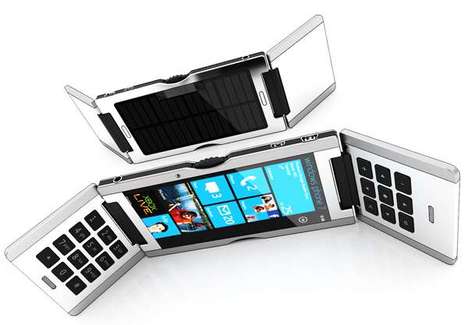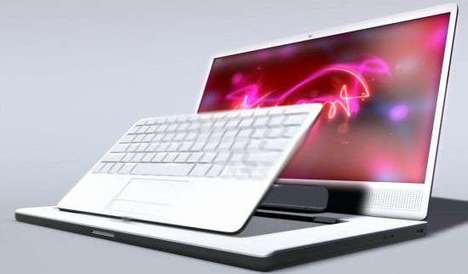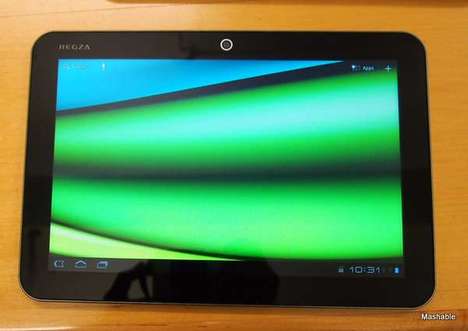Intangible Thought Sparks Innovation
Ron Pecunia, Director of Business Innovation Services at Dell
Related Trend Reports
Art & Design, Computers, Design, Gadgets, Lifestyle, Mobile, Multimedia, Pop Culture, Science, Social Media, Tech, Unique Ron Pecunia is the Director of Business Innovation Services at Dell Inc. He helps shape clients vision and strategy with his creative intuition and multifaceted knowledge. Ron is the adventurous type, who likes to participate in spontaneous activities like propelling from the 108th floor of the Stratosphere Tower when in Las Vegas for a conference. For the last 15 years, Ron has been a leader in business innovation and information within the technological and business world. He grew up in New Orleans, earning his Mechanical Engineering and Mathematics degree from Louisiana State University.
Ron Pecunia is the Director of Business Innovation Services at Dell Inc. He helps shape clients vision and strategy with his creative intuition and multifaceted knowledge. Ron is the adventurous type, who likes to participate in spontaneous activities like propelling from the 108th floor of the Stratosphere Tower when in Las Vegas for a conference. For the last 15 years, Ron has been a leader in business innovation and information within the technological and business world. He grew up in New Orleans, earning his Mechanical Engineering and Mathematics degree from Louisiana State University. Ron's positive, anything-is-possible outlook on life and business leads Dell to limitless innovation possibilities. He explains that Dell is a company that ventures into new industry realms. Dell leverages multi-interdisciplinary teams to spark innovation with clients. Dell teams up with various industry/technology/analysts to maintain fresh market insight. Much like the first Dell computer introduced in 1984, Dell continues to produce entirely unique takes on market opportunities.
Ron claims that it's important to look at "the art of the possible." Allowing ones mind to wander freely pondering intangibles and direct value to the user will in turn pioneer future innovations. Ron exclaims that true innovation isn't conjured up in a lab, innovation is created by those who dare to do what others are scared to pursue. He says "successful people do what unsuccessful people should do." It's refreshing to know that as our world continues to go through a digital transformation, industry leaders like Ron Pecunia and Dell Inc drive us into the future of intangible possibility making.
Four Questions with Ron:
Q1: How does your team generate new ideas?
I am fortunate to have a cross-disciplinary team that understands the industry and the capabilities/possibilities of multiple technologies. Because the team has such a deep knowledge of our technologies and services and also has a wide range of experience across industry, we are able to produce very innovative business processes and solutions for our customers. Our focus is to drive innovation into companies using four disruptive domains: Business Intelligence and Analytics, Cloud, Social Media and Mobility. After we thoroughly understand the business needs of our customers, we work together with them to design a fresh and comprehensive solution or use case. Recently, my team conducted a “white boarding” session where we designed innovative solutions utilizing these four disruptive technologies.
An example of this type of innovative solution was designed for the higher education industry. We worked with a US university on student performance and retention. A predictive score is generated for the students based on their socioeconomic, behavioral and academic information. Both the school counselors and the students are able to access this predictive score, and substantiating data, via a user-friendly dashboard which can also be accessed from a mobile device. Because the score is being generated based on real-time data, a student has a better chance of succeeding and the school benefits from a higher student success rate.
Now let’s move over to healthcare. My team also designed a similar business model for a hospital environment. Our task was to analyze patient readmission rates so that the healthcare providers can be proactive concerning patient treatment. We worked with available demographic and social patient information, not necessarily accessible by the hospital, such as socio-economic status, other insurance and number of people at home, location, etc. We found that the younger individuals who are dependents have a lower rate of returning to the hospital after treatment, as opposed to the older population who are self-supporting and have a higher rate of needing additional care. When the hospitals and doctors are provided with this analytical data, they are able to be more prepared and proactive for the patients who have a higher rate of readmission. Readmission is area where hospitals are measured and consumers are getting more and more savvy in picking providers that have lower readmission rates.
Basically, we're focused on accelerating innovation for our clients. We are continually learning new possibilities within this digital transformation focus. This reminds me… When I was studying engineering in college, we were told that the reason why a titanium bicycle cannot be patented is because anyone familiar with the art of bicycle design could think of that. You go to a bicycle maker and show them your titanium metal and they would immediately see the value of using it in bicycle design. Essentially, we are bring the titanium to our clients – they know their businesses very well and together we can innovate quite effectively.
Q2: Do you have specific rituals for re-setting your team to be creative?
I have some of my own tricks. I like to take a “time out” and separate myself a little. I ask myself, "What if anything is possible and there were no constraints? What would I be? What would I have? What would I do?" I find the answers to these questions when I allow my mind to wander and venture into previously unknown places.
For example…If a car company thought of the “what if’s”, they might say “Ideally, we would like to proactively notify their customer directly via their mobile device, that their car needs to come in for repair before it even needs maintenance.” If they could know everything about a customer before that person even came into the shop for car maintenance (what type of loaner car they liked or whether they wanted to wait), wouldn't that be remarkable? If you get someone thinking like that, then anything is possible.
Combine that thinking with industry/technology knowledge and you have innovation. When you get the right people in one room focused on the customer, talking along the lines of innovation, then that sparks creativity!
I am a mechanical engineer, so a design-driven way of thinking is in my nature. The beginning of the creative process is the understanding of the customer’s needs. After you really understand the needs, then you can iterate on various prototypes - you need to walk away and then challenge it and then come back to it. Even your best prototype is still only a hypothesis until it evolves into something that really moves the needle! The idea will have value and come to life when it makes a big difference for the customer, the stakeholders, owners, etc.
Q3: How do you identify trends? What resources does your team use to spot trends and consumer insights?
First, we identify trends by maintaining a deep understanding of business/technology as a whole. Second, we have a knowledge and deep understanding of the different industries that we serve. Third, our own personal life and work experiences help transform our knowledge and abilities into actions.
It is important to have a comprehensive understanding of the past, current, and future of consumer technology. “In what direction is the wind blowing?” Where are the socio-economic trends and generational trends heading. We also stay on top of analysts, market insights and awareness, and even generational gaps.
Q4: How do you ensure you're getting trends/insights information that your competitors aren't getting?
Think back to the bicycle question. Competitors can be making the same type of things/services but it’s the little things they do differently that make ALL the difference to the customer.
I like to think of the verse "there is nothing new under the sun" (Ecclesiastes 1:9). The fun of innovation is that it does not have to be some new element created in an expensive laboratory where it can never be duplicated. An innovative solution can be based on something as simple as a new need that your customer has expressed today. Your solution does not have to be so unique and life changing, it only has to make a difference to the customer to be really effective.
The challenge is not that we have to create something so profound and patentable each time, the question is “Can we create an innovative solution/service in your company, for your customers, today and beat others to the punch?” As long as you are the one who innovates and drives that solution – that is all that matters! What innovative companies actually do is what other companies know they should do. That is what separates us all. Successful people do what unsuccessful people know they should do.
Featured Articles

Modernizing Classical
Contemporary pianos utilize high-tech features to seek out diverse markets

Touchscreen Interiors
The rise in gadget popularity calls for home-integrated tablets

Foldable Tech
Gadgets become more portable and functional to suit consumer needs

Multi-Tech
The abundance of consumer gadgets calls for devices that cater to all

High-Tech Tablets
With laptops getting smaller and faster, consumers seek new functionalities

Comfort Tech
Gadgets get a soft and cuddly makeover to let geeks kick back

Converta-Tech
Innovations that augment and convert existing gadgets

Feather Tech
Extremely lightweight gadgets for easy travel-ability

Connect-A-Tech
Gadgets and apps allowing for sharing of multimedia platforms